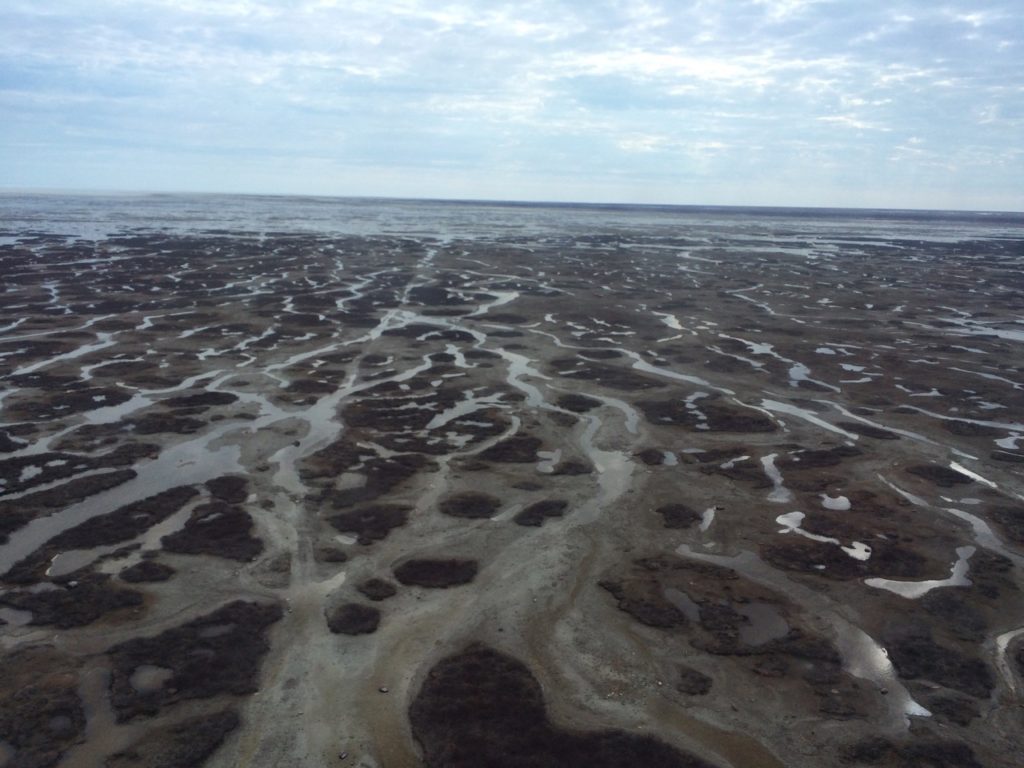Guest post by researcher Robert Rockwell
Linked paper: Liberalized harvest regulations have not affected overabundant Snow Geese in Northern Manitoba by D.N. Koons, L.M. Aubry, and R.F. Rockwell, The Condor: Ornithological Applications.
As many marshes along the Gulf Coast were drained in the late 1970s, Snow Geese that had used them as wintering areas began shifting to agricultural land instead. Leftover crops in farm fields provided them with a generous new winter and spring diet, and the population began growing at an unprecedented rate. While they have ample habitat in the south, the growing number of geese, coupled with their destructive foraging behaviors, has led to increasing and widespread habitat destruction in the Arctic coastal habitats where they breed.
In response to this habitat degradation and the resulting negative impacts on other species, the U.S. and Canada attempted to reduce the size of the population by liberalizing the regulations on Snow Goose hunting beginning in 1997. This included increasing bag and possession limits, expanding the hours during which hunting is permitted, allowing the use of unplugged shotguns and electronic callers, and instituting a spring conservation harvest. Adult mortality has a greater relative impact on the growth rate of this species than any other demographic variable, so wildlife managers hoped that removing more adults from the population through hunting would help bring it under control.

Adaptive Harvest Management is an approach used in North America that examines the impacts of management decisions and readjusts those decisions as necessary to meet management goals. We used our 50-year database on more than 100,000 Snow Geese banded on Canada’s Cape Churchill Peninsula to assess whether the new regulations were having the desired effect of increasing adult mortality. Using new analytical techniques, we could estimate the rates of both hunter and non-hunter deaths of adult geese and see whether those rates changed when the new hunting regulations were implemented.
Adult harvest mortality has stabilized at a low level, with only around 3% of adult geese being killed by hunters in a given year, probably because the sheer abundance of Snow Geese in this population has overwhelmed the number of hunters. The number of North American hunters has not increased in recent years, and most hunters are only willing to harvest enough geese to meet their family’s needs. Adult non-harvest mortality declined through the 1970s and 1980s to trivial levels (around 1% per year), but has increased recently and now fluctuates between 10% and 19% per year. Unfortunately, the combined mortality isn’t enough to limit the species’ growth, and the population continues to increase in size.
In light of our results, the next cycle of Adaptive Harvest Management needs to consider the potential causes of the increase in non-hunting mortality and its year to year variability, especially since such variation actually reduces overall population growth rate. We also suggest that management agencies further refine hunting regulations to increase the harvest per hunter and make efforts to increase public participation in hunting, perhaps through outreach to currently underrepresented groups.
The authors are all associated with the Hudson Bay Project. More about our work can be found at http://research.amnh.org/users/rfr/hbp.
